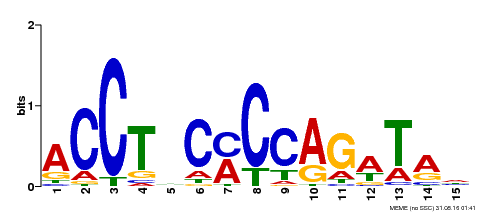 |
PlantRegMap/PlantTFDB v5.0
Plant Transcription
Factor Database
|
| Home TFext BLAST Prediction Download Help About Links PlantRegMap |
Transcription Factor Information
| Basic Information? help Back to Top | |||||||||
|---|---|---|---|---|---|---|---|---|---|
| TF ID | DCAR_023101 | ||||||||
| Organism | |||||||||
| Taxonomic ID | |||||||||
| Taxonomic Lineage |
cellular organisms; Eukaryota; Viridiplantae; Streptophyta; Streptophytina; Embryophyta; Tracheophyta; Euphyllophyta; Spermatophyta; Magnoliophyta; Mesangiospermae; eudicotyledons; Gunneridae; Pentapetalae; asterids; campanulids; Apiales; Apiineae; Apiaceae; Apioideae; Scandiceae; Daucinae; Daucus
|
||||||||
| Family | C2H2 | ||||||||
| Protein Properties | Length: 514aa MW: 57471.6 Da PI: 6.503 | ||||||||
| Description | C2H2 family protein | ||||||||
| Gene Model |
|
||||||||
| Signature Domain? help Back to Top | |||||||
|---|---|---|---|---|---|---|---|
| No. | Domain | Score | E-value | Start | End | HMM Start | HMM End |
| 1 | zf-C2H2 | 19.8 | 2.2e-06 | 266 | 287 | 2 | 23 |
EETTTTEEESSHHHHHHHHHHT CS
zf-C2H2 2 kCpdCgksFsrksnLkrHirtH 23
C +Cgk F+r nL+ H+r H
DCAR_023101 266 FCLICGKGFKRDANLRMHMRGH 287
5*******************98 PP
| |||||||
| Protein Features ? help Back to Top | ||||||
|---|---|---|---|---|---|---|
| Database | Entry ID | E-value | Start | End | InterPro ID | Description |
| SuperFamily | SSF57667 | 6.93E-5 | 263 | 290 | No hit | No description |
| PROSITE profile | PS50157 | 11.552 | 265 | 292 | IPR007087 | Zinc finger, C2H2 |
| SMART | SM00355 | 0.012 | 265 | 287 | IPR015880 | Zinc finger, C2H2-like |
| Gene3D | G3DSA:3.30.160.60 | 3.3E-5 | 267 | 316 | IPR013087 | Zinc finger C2H2-type/integrase DNA-binding domain |
| PROSITE pattern | PS00028 | 0 | 267 | 287 | IPR007087 | Zinc finger, C2H2 |
| SMART | SM00355 | 59 | 314 | 347 | IPR015880 | Zinc finger, C2H2-like |
| SMART | SM00355 | 22 | 352 | 374 | IPR015880 | Zinc finger, C2H2-like |
| Gene Ontology ? help Back to Top | ||||||
|---|---|---|---|---|---|---|
| GO Term | GO Category | GO Description | ||||
| GO:0006355 | Biological Process | regulation of transcription, DNA-templated | ||||
| GO:0010044 | Biological Process | response to aluminum ion | ||||
| GO:0010447 | Biological Process | response to acidic pH | ||||
| GO:0005634 | Cellular Component | nucleus | ||||
| GO:0003676 | Molecular Function | nucleic acid binding | ||||
| GO:0003700 | Molecular Function | transcription factor activity, sequence-specific DNA binding | ||||
| GO:0046872 | Molecular Function | metal ion binding | ||||
| Sequence ? help Back to Top |
|---|
| Protein Sequence Length: 514 aa Download sequence Send to blast |
MDLQKRLCGV ETWTKLPSST QLELQKKVPP DQHSFINFSS QGNVQKWNDP SIIDYSTRIG 60 EQFPEFVQPS QTQCTYPCNN DNQMNILGQL DGQMNGIRDA IRNCDWDPRV MLTNLSIMEQ 120 KIHQLQDLVH IIFGRRTEAM NGSEALAAQQ QQLINADLTS IIVQLISTAG SLLPSSKNTF 180 SSGNPFGNGL GQPGGIGYPS GPSGTVNNHV NKVEDHSDQI DLIVNNVEDH DLKDEEEVDE 240 GEHLPPGSYE ILQLEKEEIL APHTHFCLIC GKGFKRDANL RMHMRGHGDE YKTPAALAKP 300 HKEMSSEPSL VKRYSCPYIG CKRNKDHKKF QPLKTILCVK NHYKRTHCDK SYTCSRCNTK 360 KFSVIADLKT HEKHCGRDKW LCSCGTTFSR KDKLFGHITL FQGHTPAIPL DENKGMVELS 420 DHGEANETPS KVARTDFDFS PAAFLNIMDA KGTADEDTRI FSPLDFDISS LSGFSDFPRP 480 PFEDSDNSLS FLIPSACNYP RGTERNPGSN NLK* |
| Functional Description ? help Back to Top | ||||||
|---|---|---|---|---|---|---|
| Source | Description | |||||
| UniProt | Probable transcription factor. Together with STOP2, plays a critical role in tolerance to major stress factors in acid soils such as proton H(+) and aluminum ion Al(3+). Required for the expression of genes in response to acidic stress (e.g. ALMT1 and MATE), and Al-activated citrate exudation. {ECO:0000269|PubMed:17535918, ECO:0000269|PubMed:18826429, ECO:0000269|PubMed:19321711, ECO:0000269|PubMed:23935008}. | |||||
| Binding Motif ? help Back to Top | |||
|---|---|---|---|
| Motif ID | Method | Source | Motif file |
| MP00196 | ampDAP | Transfer from AT1G34370 | Download |

| |||
| Regulation -- Description ? help Back to Top | ||||||
|---|---|---|---|---|---|---|
| Source | Description | |||||
| UniProt | INDUCTION: By shock H(+) and Al(3+) treatments. {ECO:0000269|PubMed:17535918}. | |||||
| Regulation -- PlantRegMap ? help Back to Top | ||||||
|---|---|---|---|---|---|---|
| Source | Upstream Regulator | Target Gene | ||||
| PlantRegMap | Retrieve | Retrieve | ||||
| Annotation -- Protein ? help Back to Top | |||||||
|---|---|---|---|---|---|---|---|
| Source | Hit ID | E-value | Description | ||||
| Refseq | XP_017254798.1 | 0.0 | PREDICTED: protein SENSITIVE TO PROTON RHIZOTOXICITY 1-like | ||||
| Swissprot | Q9C8N5 | 1e-175 | STOP1_ARATH; Protein SENSITIVE TO PROTON RHIZOTOXICITY 1 | ||||
| TrEMBL | A0A164UY59 | 0.0 | A0A164UY59_DAUCS; Uncharacterized protein | ||||
| STRING | VIT_18s0072g00840.t01 | 0.0 | (Vitis vinifera) | ||||
| Orthologous Group ? help Back to Top | |||
|---|---|---|---|
| Lineage | Orthologous Group ID | Taxa Number | Gene Number |
| Asterids | OGEA4754 | 24 | 41 |
| Best hit in Arabidopsis thaliana ? help Back to Top | ||||||
|---|---|---|---|---|---|---|
| Hit ID | E-value | Description | ||||
| AT1G34370.2 | 1e-168 | C2H2 family protein | ||||
| Link Out ? help Back to Top | |
|---|---|
| Phytozome | DCAR_023101 |



